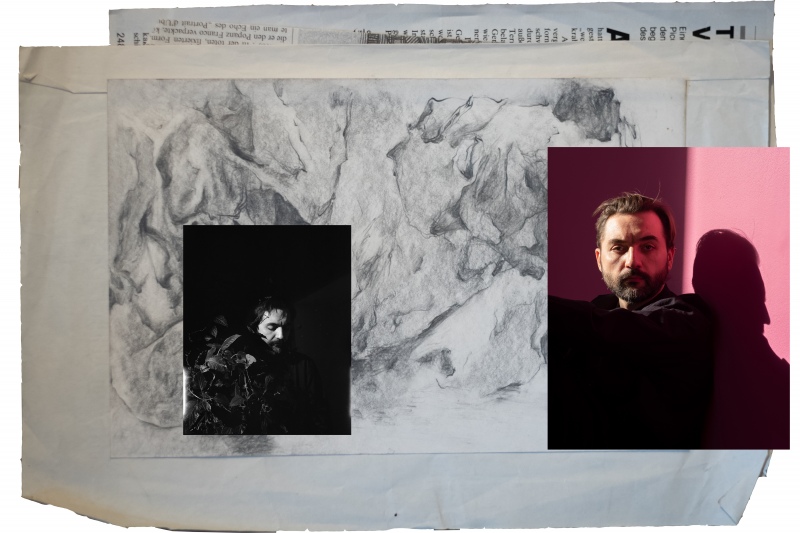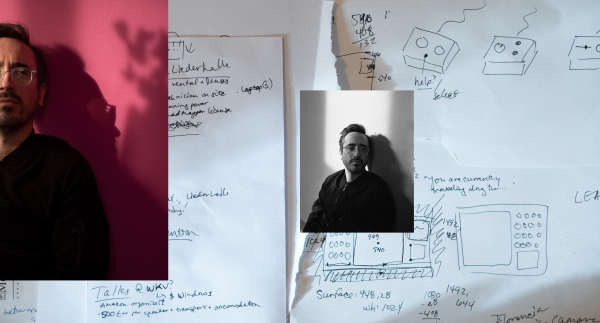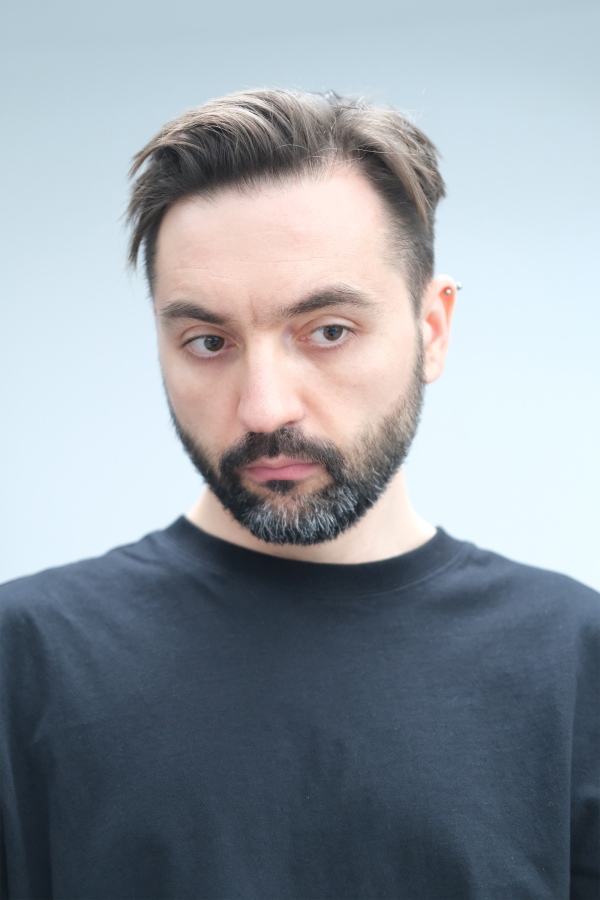Mapping the geopolitics of art
Sasha Kurmaz in conversation with Klara Czerniewska-Andryszczyk
-
This is not your first time in Warsaw. Can you tell me about your relationship with the city and Poland in general? Are you familiar with the local art scene? Can you tell me about the exhibitions you took part in here?
- Yes, I first visited Warsaw in the early 2000s when I was an active graffiti writer. My social circle was closely related to the people in the graffiti community, and I still keep in touch with some of them even though I stopped making graffiti around 10 years ago. Moreover, my first solo exhibition was held in Warsaw, in a self-organised space run by a group of artists around the vlep[v]net platform. So Warsaw is an important point in my artistic biography. I am also a fan of Polish art from the 1980s/90s, with names like Artur Żmijewski, Alicja Żebrowska, Mirosław Bałka, Zbigniew Libera and so on.
-
How did your residency at the Ujazdowski Castle come about? What will you be working on here?
- My residency happened as a result of the Kazimir Malevich Artist Award that I received last year. At the moment, I am working on a joint project with Alexander Brener, and I would love to publish it in the form of a book. I will see how it goes, maybe some new ideas will come up.
-
Alexander Brener also popped up as a reference in my conversation with another resident, Grayson Earle. Can you tell me more about him?
- Oh, that's a good story. I was a big fan of the actions Alexander performed in the 1990s, and also love the books that he did with Barbara Schurz. For me, it all started in the spring of 2015, while I was on a residency at KulturKontakt in Vienna. I knew from his books that they also lived there. So I decided to use my time there and get to know them. First, I went to the Knoll Gallery, which officially represented them at the time. I met Hans Knoll, the owner of the gallery, and asked him if he could arrange a meeting with Alexander, or at least give me his email. However, he said that he could only sell the artworks, and that's all he could do for me. I was a little upset, but did not give up and continued looking for another opportunity. I bought a train ticket and went to Prague to meet my friend, a wonderful artist Avdey Ter-Oganyan, in the hope that maybe he knows something and could help. Avdey told me that Brener was now living in Berlin and gave me the contact to his friend Ilya there. Ilya was also an artist and part of the circle of Russian émigré artists in Germany. So I bought another ticket and went to Berlin. When I met Ilya in Berlin, he was not overjoyed by my desire to get to know Alexander personally and warned me that Alexander is a very harsh person who didn’t like to be nagged. He also mentioned that, after the last action Alexander and Barbara held in Berlin, the entire audience was horrified and insulted, and that no one wanted to contact them anymore. I said that I was ready for anything, even the most unexpected things, and I asked him for his help in arranging a meeting. He reluctantly agreed to help me, but said that he would not promise anything. A few days later, Ilya called me and said that Alexander would be giving a lecture in the park for a small circle of his followers and I could join if I wanted. The next day I met Alexander and Barbara, and since then we have been friends. Last year Alexander wrote a wonderful essay for my book about amateur erotic photography, and this year we want to make a joint book conversation in which his short stories will enter into dialogue with my collages.
-
You said earlier that you came from the graffiti scene. How do you define your practice, what is the main topic you tackle and the forms and mediums you use?
- It may sound funny, but in a way, I came to art from the street. Graffiti and ska / punk music, self-organisation and autonomous movement — all these things formed the basis for my views and my relationship with the world, and became the starting point for my artistic development. In my artistic practice, I use different media such as photography, video, and interventions in public space. I do not have one specific or main topic in my works. In most cases, I am interested in the urban space, the relationship between human beings and the modern world, as well as the relationship between individuals and power structures. Sometimes I work in collaboration with communities or social groups, professionals from other disciplines or political activists.
-
Can you also tell me about the recent exhibition in Bialystok that you were part of?
- The Arsenał Gallery hosted the show In the Beginning Was the Deed! It was an exhibition dedicated to the history of insurgency and anarchist movements in Eastern Poland and Eastern Europe. I was invited by Matthew Post to contribute to this exhibition and do an intervention in the public space. Unfortunately, due to quarantine restrictions I could not come to Białystok, so my work was carried out according to my instructions, but without me being personally involved. In the media, I saw that this exhibition – and the artwork by Karol Radziszewski in particular – was attacked by right-wing activists. This pressure on the artists and the gallery team really pissed me off. I would not be surprised if such things had happened in Kyiv, but it is hard to imagine that this is happening in Poland nowadays. It seems that conservative politicians and right-wing populists want to seize power over all cultural institutions in Poland and put up their puppets there.
-
Can you tell me about the art scene in Kyiv / Ukraine?
- The art scene is small and not as active. I think this is due to the lack of relevant specialised education, the lack of institutions and funding. Recently, there have been a lot of self-organised exhibitions and events, but they do not have a systemic basis and are mostly situational. There is a rising new generation of young artists who think differently and work in new directions. This is encouraging!
-
But how about places like the PinchukArtCentre? You had a solo exhibition there in 2016. Do the oligarchs help to build a professional art scene in Ukraine?
- The PinchukArtCentre is a private initiative of one person that does not affect the overall situation in the country. It's a nice place with a large audience, but it doesn't help to build the scene. For the development of the art scene, it would be necessary to have such an art centre in every city throughout Ukraine, and not only in Kyiv. Frankly, oligarchs and big businesses in Ukraine are not interested in developing art and culture. There are a few exceptions, but this is not enough.
-
In your CV, there is an interesting ‘map’ of your artistic relationships. Do you consider yourself related to the notion of an ‘Eastern European’ artist? Do you feel there is still a division between the East and West, or has that become a cliché?
- I believe that place, region, social and economic conditions have a great impact on our worldview. There is still a certain distance between East and West Europe. You can also notice this in Poland, but in Ukraine it is even more pronounced. Although the internet and social media seem to blur this distinction, it is still very visible. Therefore, the answer to your question is yes, I believe that there is a difference and that it clearly affects the artistic processes and works. As for me, I would say that I am continuing the ‘Eastern European’ tradition of political and socially oriented art: art that deals with the questions of war, political conflicts, the rise of fascism, revolution, social change, human rights activism, feminism, the autonomy of art, various problems of artistic production and of the work itself.
- Warsaw / online, October / November 2021


